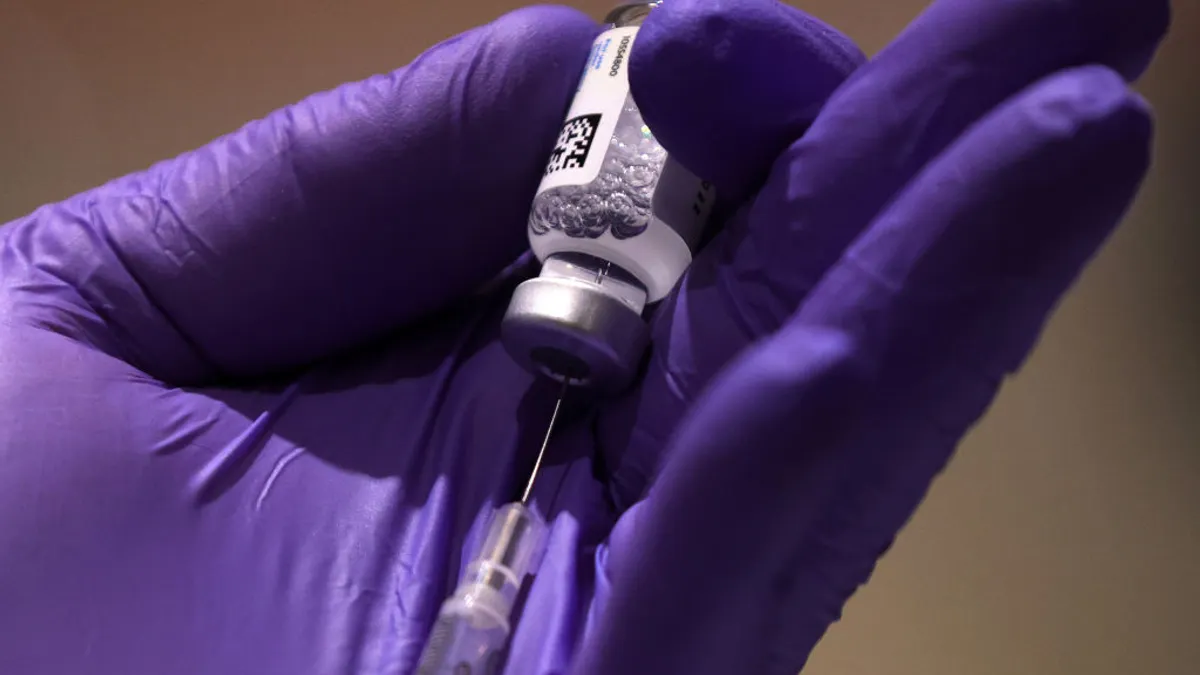As technology improves and gaps in healthcare are exposed, players throughout the drugmaking industry have strived to streamline the path to approval. Rather than cutting corners on safety, this approach has focused on ensuring that truly innovative products encounter minimal roadblocks along the way.
Less than 15% of drugs arrive successfully to the market, FDA Commissioner Robert Califf told attendees of the Drug Information Association (DIA) annual meeting in Chicago on Monday. Regulators are working with the industry to make sure the evolution reflects both the newest digital capabilities and the need to save time and money on products moving through the trial process.
For a more streamlined process, both regulators and industry need to more quickly weed out products that won't make it to the finish line, Califf advised.
"So-called 'fast failure' is very important to avoid exposing patients to the risk of clinical trials or ineffective treatments, and preventing the raising of false hopes," Califf said. "Both successes and failures can be critical to guiding developers to the best and most efficient pathway, and help them save time and money, prevent wasted or duplicative efforts, and ensure speedy development of the best and most effective products."
At the same time, continued monitoring of products after they’ve been driven to the market is crucial to solving the problem of waning life expectancy in the U.S., which now trails other high income countries by a full five years, Califf said.
"Proposed legislative changes and increased recognition of the complexity of assigning value to a medical product will push us to continue evidence generation throughout the lifecycle of a product — not only for safety, but also for proof of efficacy, effectiveness and eventually comparative effectiveness," Califf said. "We need to draw much better evidence for when medical products provide a true benefit."
Data is the key behind advances in the medical industry that improve patient outcomes and do so in a way that benefits people across the board, not just those with certain socioeconomic standing, Califf said.
"I hope that we can develop connected ecosystems in which patients or families and clinicians are deeply engaged to both participate in relevant trials, to play an essential role in study design, and implement findings of studies into practice," Califf said. "Consider how effective we could be if we revamped the foundation system for sharing data."
Through data, a patient-first approach
The future of healthcare is in personalized treatments driven by faster and more accurate data, said Ken Getz, deputy director and research professor at the Tufts Center for the Study of Drug Development, during the same DIA keynote address.
"It's a future where therapeutic innovation and healthcare delivery are highly customized, informed by patient needs, and rich health and medical data, enabling more accurate diagnoses, earlier prediction and detection of disease, individually tailored treatment planning, more timely administration of interventions to maximize individual response and more targeted, effective and safe therapies," Getz said.
The industry is moving in that direction rapidly, Getz said. Nearly all drugs in development for cancer and 60% of drugs for other diseases rely on genetic information. And almost 40% of all drug approvals are part of the class of personalized medicines, he said — up from 9% in 2013.
The use of vast amounts of data is driving those changes, Getz said. In 2005, the average number of data points per pivotal trial was 494,000, and in 2010, that average increased to 929,000. In 2020, the number of data points skyrocketed to 3,453,000.
The pandemic also drove the compression of drug development timelines by shortening phase transitions and necessitating speed and efficiency in the face of a crisis-level threat.
"We have long recognized these individual factors that ultimately contributed to our success during the pandemic, but the key was the simultaneous, synchronous and holistic way that all of these individual factors were managed collectively, the way they were coordinated and implemented by stakeholders, and partners across global clinical research and clinical care enterprises," Getz said.
The pandemic exposed many shortcomings in the healthcare system, Getz said, but the response showcased the ability of the system to adjust when the chips are down.
"Lessons from our pandemic experience affirm much of what we have long known, and so much more," Getz said. "They magnify and demonstrate a path forward toward realizing a future where each study volunteer participates in the right trial, and where each individual patient receives the right treatment in the right dose at the right time."




















